In Rainbow Six Siege, Ubisoft have crafted a tension-soaked tactical shooter of unequalled nuance
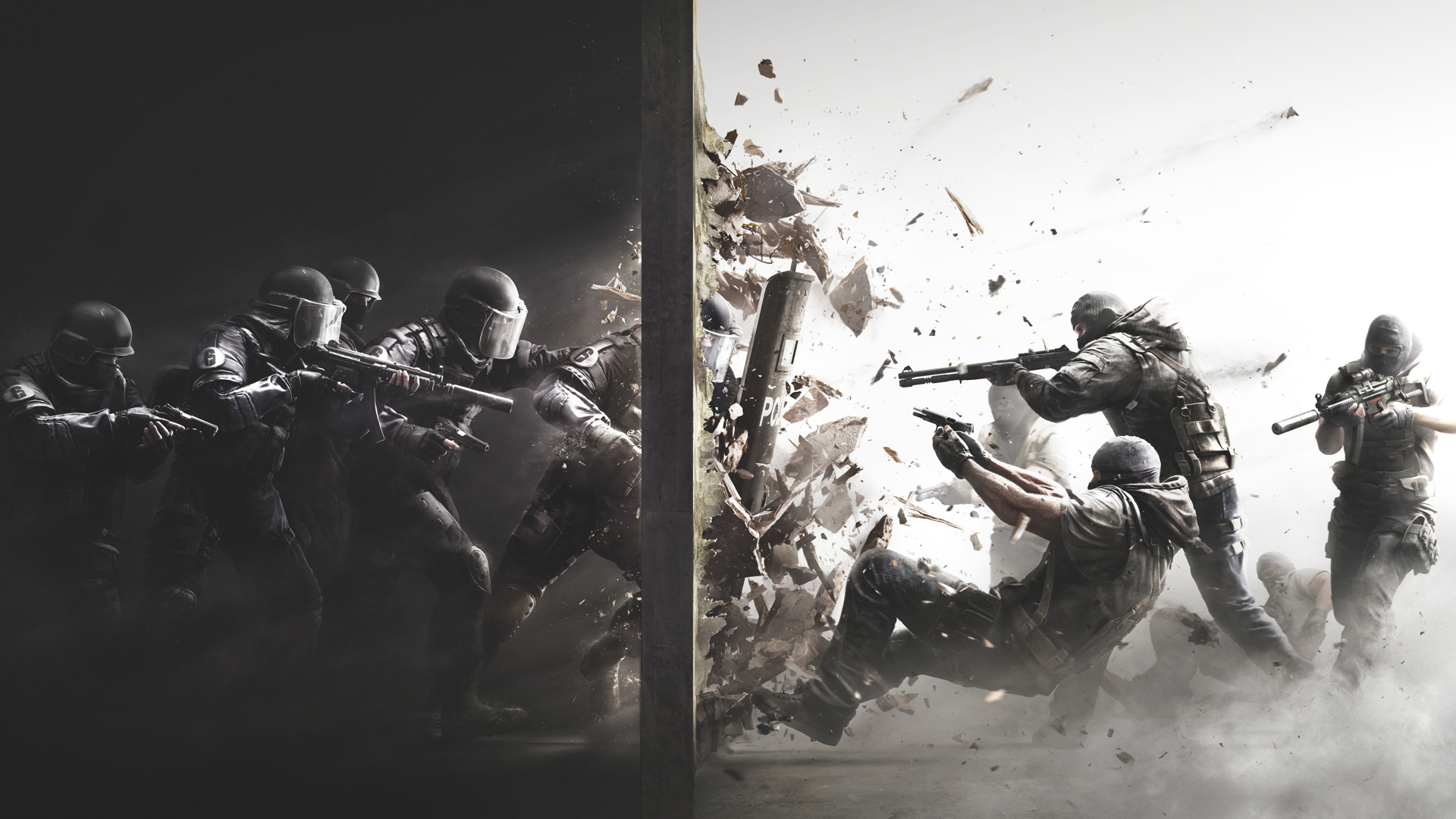
Picture this: I’m holed up in the garage of the consulate map. My team is three rounds down in a ranked match, and if we lose this one it’s all over. Despite a series of wins under our belt, this new team is proving formidable and deadly, and we’re down to just four players. We have to give it everything we’ve got. I punch a slender, horizontal hole through the plasterwork behind the parked van so that I have a clear line of sight to the barricaded door in the next room. After we reinforce the brittle doors at the front of the garage and place some traps at the top of the stairs that lead into the room, we take our positions and nervously wait.
Not long after we hunker down, there’s a dull, distant explosion as the attackers gain entry to the building on one of the floors above, followed by the sickening pop and thud of a Fuze player’s wall-penetrating, bouncing grenades. It takes a moment to figure out where the volley is coming from, but by the time I spot the explosives falling into the area next to the van, a second volley bursts through the ceiling above me. I retreat, holding the folded deployable shield I was about to use in the hope that it might help. Somehow, I survive, but one teammate is less fortunate. I place the shield.
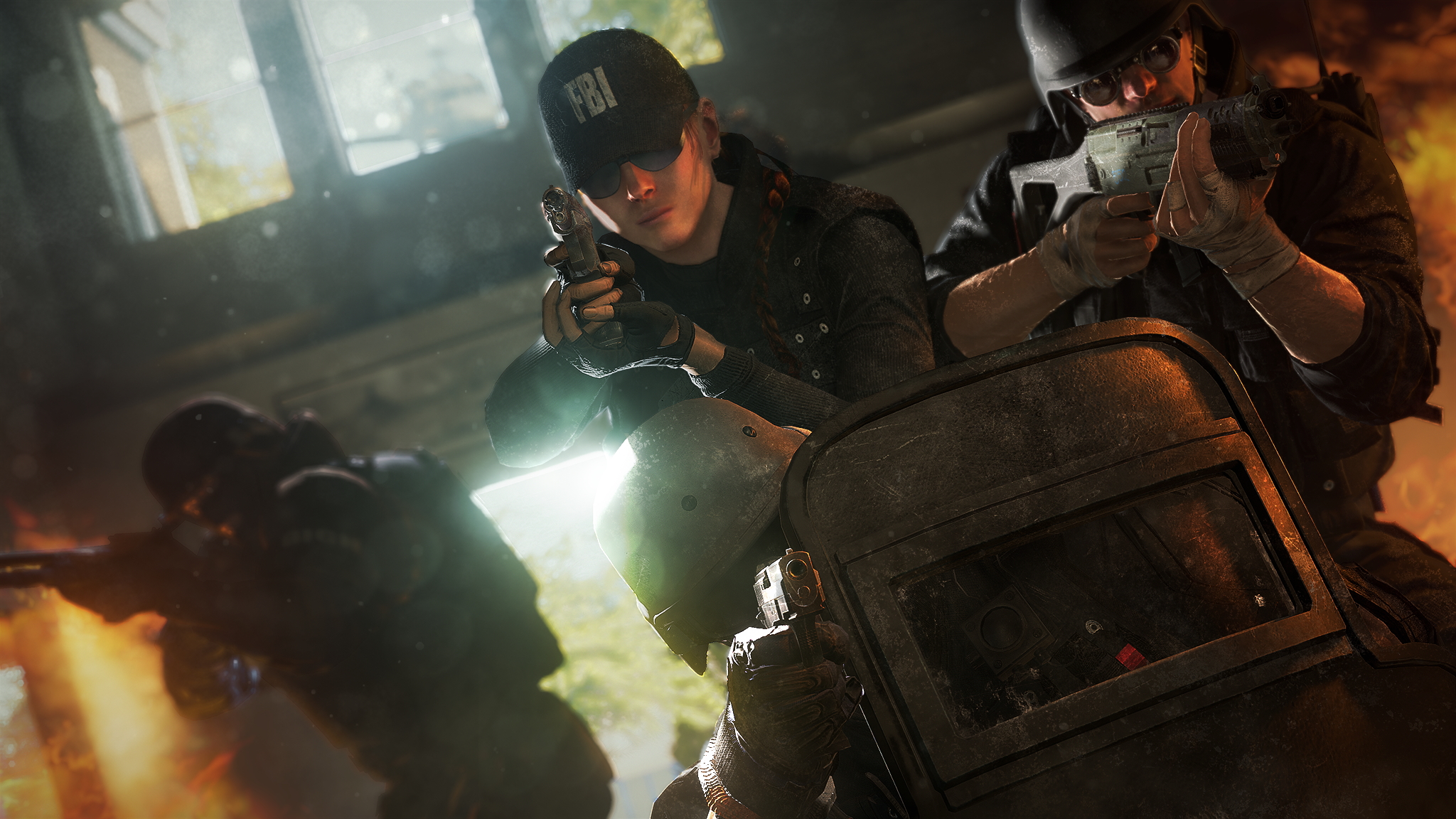
There’s little time to consider the ramifications of the past few seconds as the unfortified trapdoor above us yields to explosives, and I duck back towards the now blackened corner of the room to see if anyone’s up there. A drone drops in, trying to mark our positions, and I quickly destroy the fast-moving pest. I rush the hole in the ceiling to see if I can catch the distracted operator, and manage to kill him as he attempts to move away. But my coup is brief – one of his team drops through the gap and opens fire. I respond in kind and emerge the victor by ducking behind the deployable shield I placed earlier. I check my health: a paltry five per cent.
A lull in the thunder is followed by the barricaded door in the room beyond smashing, and the yell of an ally as he’s killed by the breaching enemy. My last remaining teammate opens fire through the hole I created earlier. I attempt to get behind him to provide support but am hit and collapse, injured. The firing stops for a quick reload and my teammate fixes me up. I now have a luxurious 50 per cent health. Bullets tear through the unprotected wall as he pulls me up, and I dash over to the door that enters into the room our harasser is taking cover in. I pause for a heartbeat and wait for the gunfire. As it starts up, I whip around the corner and get a clean(ish) kill. It’s now two vs two.

My partner takes cover over by the front of the van to watch the stairwell, and I head back to my corner. Before I can make it, he’s hit and injured. I jump down and heal him next to the wheel arch, then start to head back. As I climb onto the raised section of the garage, another volley of gunfire rings out and the spirit-sapping announcement of, “Friendly, last operator standing,” rings in my ears. I back towards the corner, trying to figure out where my friend’s killer is hidden, and then... sudden death. The end-of-match replay reveals that I’d been flanked by the other enemy player, who’d used the hole I created at the beginning of the match to fire on me. Look up ‘irony’ in the dictionary and you’ll find this match report.
This sizeable anecdote is just one of dozens I have accrued since the game’s launch in December 2015. No other multiplayer shooter creates so much drama, or catalyses such thrilling stories in the course of a PvP match. No other shooter can match the tension of attacking or defending against a team of skilled players, the array of powerful gadgets, or the overwhelming desire to avoid rank demotion. It’s a potent combination that some might be tempted to label the ‘thinking person’s Call Of Duty’. But that would be to grossly overestimate the calibre of your average COD player. I’m joking! (Not joking.)
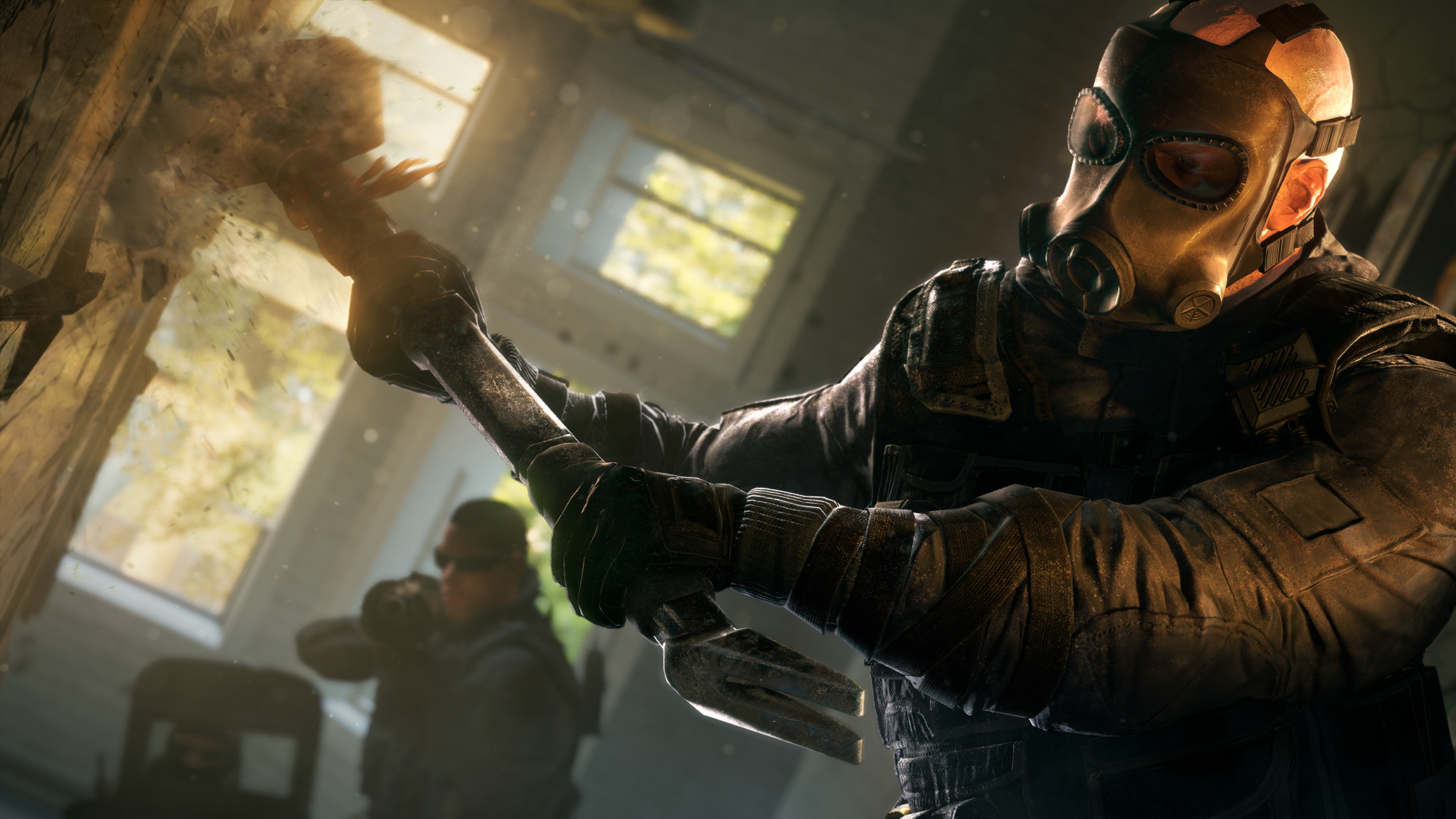
But even Siege’s considered pacing and reliance on teamwork and tactical play can’t entirely protect it from oiks. The game’s most obvious curse is the team killers who either execute their allies in the first round and leave the game, or wait until a win is in sight before hobbling everyone’s chances with much the same tactic. But while these egregious fools are the poster children for poor sportsmanship, the real threat is more insidious. It’s those players who, on finding themselves dead and watching the Herculean efforts of a last surviving teammate, attempt to trigger a vote to kick just so they can get back to playing again. Or the simpering urchins who quit out at the first sign of a match going awry.
Sign up to the GamesRadar+ Newsletter
Weekly digests, tales from the communities you love, and more
This brattish behaviour is rendered all the more frustrating by the fact that Rainbow Six is one of the few competitive online shooters where it’s entirely possible to fight back from the brink of defeat. One or two good players can still take out a team of five if they work patiently and methodically. And a flagging team can tip the balance spectacularly, spirited on by camaraderie and the challenge of heavy odds. It might not have turned out that way in my opening anecdote, but we made the opposition work hard to win.
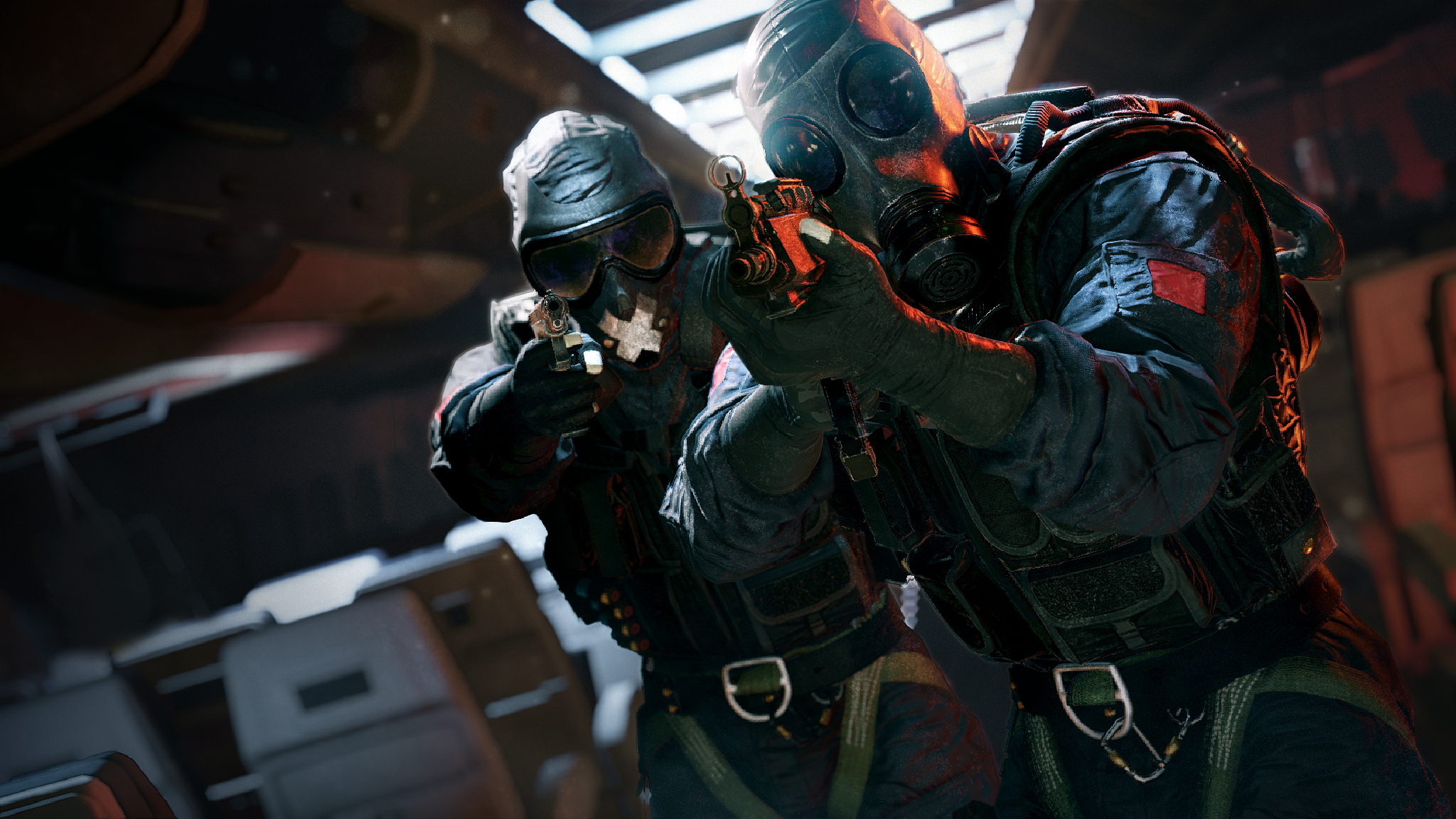
Ubisoft Montreal had their own insurmountable battle to fight, too. On launch, the balancing felt a little off, with the attacking team having a definite advantage over the defenders’ more limited options. It also felt slight as a package, offering just three PvP modes and one PvE variant on a handful of maps. It’s no wonder people gave it a miss.
The number of modes hasn’t increased in the intervening months but, it turns out, they didn’t have to. Instead, Ubisoft have drip-fed new operators and levels into the game every few months, and have continually tweaked the way weapons work, the punishments faced by unsporting players and even the UI. Over time, the game’s rough edges have been sanded away as its true potential emerges from the rather complex components.
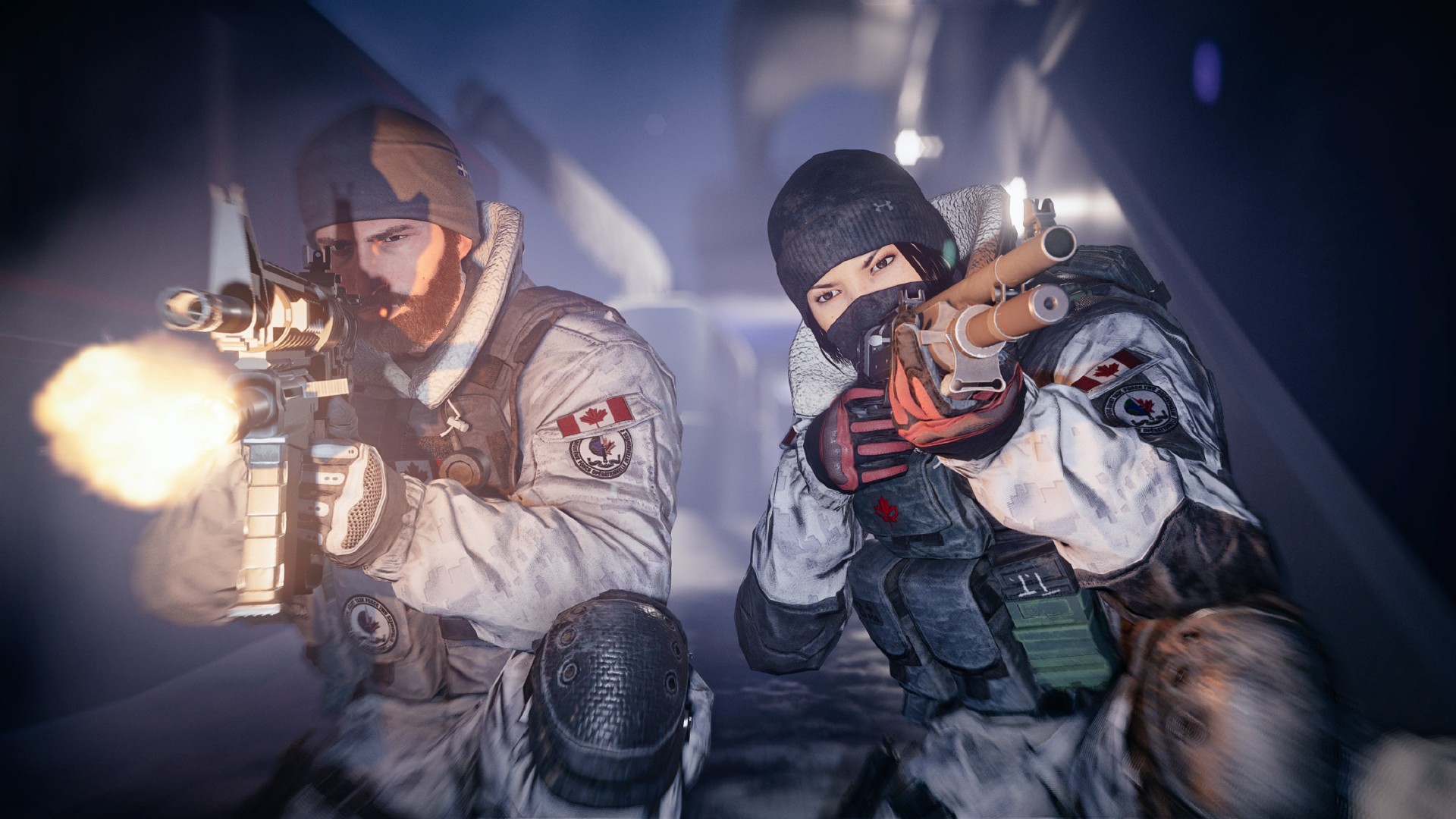
A recent, and potent, example of this fervent editing are the changes made to defending operators Mute and Kapkan. They proved the least popular choices and sported an unfavourable win-to-loss ratio, so the studio increased the range of Mute’s jammer and removed the bright red protruding anchor that gave away Kapkan’s traps. Ubisoft continue to push the potential of their destruction tech, too, with each new level offering greater opportunities to create your own lines of sight. Favela, one of the newer additions, is the first to support exterior shell destruction, making it a fraught prospect to defend. This accelerated evolution works, with player numbers double what they were at launch.
If you haven’t dipped into Siege yet, and fancy a game that rewards forward-planning and patience, or that’s slathered in unparalleled tension and satisfaction, join me. Don’t for one minute think I’ll be leaving any unfinished plasterwork unguarded, however...
This article originally appeared in Xbox: The Official Magazine. For more great Xbox coverage, you can subscribe here.


